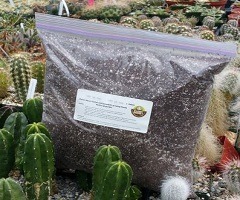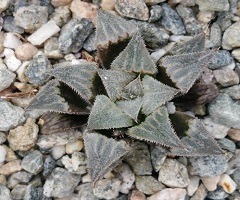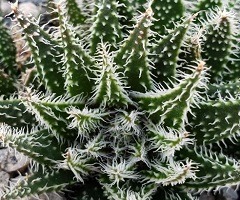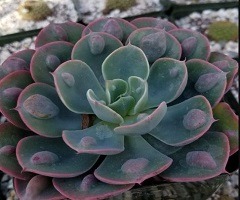Link
0 notes
Link
0 notes
Link
0 notes
Link
0 notes
Link
0 notes
Link
0 notes
Link
0 notes
Photo

How Much Light
Many people new to succulents and cacti get tripped up on how much light to give their new plant. It's easy to think, "Oh, it's a desert plant, I'll just give it tons of light!" Or conversely, one might be skeptical about how much light a succulent can really handle.
When you take into account the different qualities of light it can be downright confusing!
So we're gonna break it down into the simplest terms. We'll even teach you how to get those beautiful colors succulents are so well known for!
https://planetdesert.com/blogs/news/how-much-light
1 note
·
View note
Photo

Succulent and Cactus Soil Guide
Once you’ve figured out how to properly water your plant, the next most important thing you can do for it is to put it in the correct soil.
With a great soil mix, you not only provide your plants necessary nutrients and anchorage but help to prevent root rot! In this article we are going to help you prepare your plants for future success by setting the roots right today.
https://planetdesert.com/blogs/news/succulent-and-cactus-soil-guide
0 notes
Photo

Exterminating Pests on Your Succulents and Cacti
Us succulent and cacti owners have it pretty easy – there are relatively few pests that prey on succulents and cacti. We’re extra lucky that our plants are incredibly tough; they can endure infestations for quite a while and can withstand harsh insecticide treatments.
When an infestation happens, don’t panic! By identifying the pest early and treating it promptly, you can almost always guarantee the survival of your beloved cacti.
But before we start, let’s talk about how to prevent pests from popping up in the first place!
https://planetdesert.com/blogs/news/exterminating-pests-on-your-succulents-and-cacti
0 notes
Photo

Nopalitos
Have you ever heard about cactus salad? If you grew up in the United States probably not. But cactus (Opuntia ficus indica) has been consumed by Mexicans for hundreds of years.
Some other time I will tell you all about the Opuntia. Its health benefits, nutritional value, uses, etc. It is a fascinating cactus.
But today I just wanted to share a delicious recipe made with the pads of the Opuntia (Prickly pear cactus).
https://planetdesert.com/blogs/news/nopalitos
1 note
·
View note
Photo

How to Water Succulents and Cacti
The key to growing cacti and succulents successfully lies in learning how to water correctly.
Poor watering habits are responsible for probably 90% of all succulent and cacti deaths. If you can figure it out, you’ll probably never lose another fat plant ever again!
Is it hard? Not at all. It just requires a new approach and a different mindset.
Here is everything you need to know to keep your drought-tolerant plants’ thirst under control!
https://planetdesert.com/blogs/news/how-to-water-succulents-and-cacti
0 notes
Photo

Othonna euphorbioides
Succulent Othonna euphorbioides is a native of South Africa. It belongs to the Asteraceae family and is commonly known as the Napkin Tree. This is a caudiciform succulent with a potato-like caudex. It grows as a miniature spiny succulent shrub. The caudex or the stem of the plant grows between 10 to 15 cm. The plant goes dormant in the hot summer season. As it starts to rain, it moves out of dormancy.
https://planetdesert.com/products/othonna-euphorbioides
0 notes
Photo

Euphorbia horrida major nova
Euphorbia horrida major nova, also commonly called the African milk barrel is a member of the Euphorbiaceae family. This succulent grows as a columnar spiny succulent with sharp ridges on the stems lined with thorns. At times, one can view white and green striped markings on the stem. The growth style of this succulent is similar to that of cactus barrel cacti. A native of South Africa, the succulent flowers in summer with yellow flowers. It grows about 12 inches in height exhibiting a prolonged growth rate. It is dormant in winter and is frost-hardy. For best growth, this plant requires full sun to partial shade.
https://planetdesert.com/products/euphoria-horrida-major-nova
0 notes
Photo

Haworthia emelyae var. major
Haworthia Emelyae Var. Major goes by the common name “Haworthia Emelyae”. This succulent forms rosettes. The plant is native to South Africa and a member of the family of Asphodelaceae. It is dormant in the summertime and can grow up to a height of 3.2 inches.
https://planetdesert.com/products/haworthia-emelyaz-major-cactus-cacti-real-succulent-plant
0 notes
Photo

Aloe Haworthioies
Succulent Aloe Haworthioies is a member of the Asphodelaceae family. It is a small perennial plant with evergreen leaves. The dark green lance-shaped leaves have pearly warts. It is a stemless succulent with rosettes. The Haworthioies Aloe is a native of Madagascar and South Africa. Between summer and autumn, the plant bears tubular pink-orange-colored flowers. The other common names of the plant are zebra cactus, pearl plant, and star window plant. Aloe vs haworthia is slightly frost-hardy and winter-dormant. It is a fast-growing plant, growing up to 4 inches in height, which loves direct sunlight for wholesome growth.
https://planetdesert.com/products/aloe-haworthioides
0 notes
Photo

Echeveria Rain Drops
Echeveria Rain Drops belongs to the Crassulaceae family and is commonly known as Raindrops Echeveria. Native to the semi-deserts of Central America, this round-shaped plant can grow up to 6 inches tall. They go dormant in winter conditions.
https://planetdesert.com/products/echeveria-rain-drops
0 notes